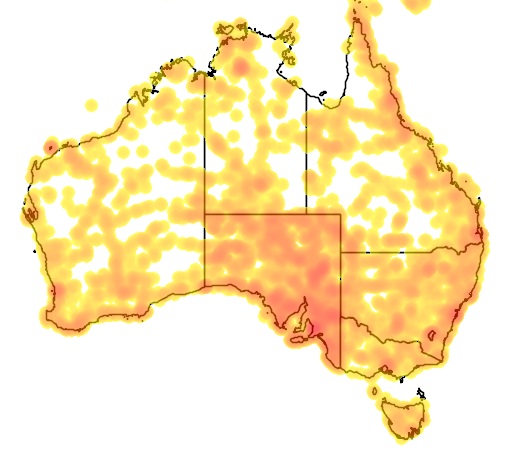|
Iridomyrmex Setoconus
''Iridomyrmex setoconus'' is a species of ant in the genus '' Iridomyrmex''. Described by Shattuck and McMillan in 1998, the species is endemic to Australia, and small populations have only been found in Esperance.Shattuck, S. O.; McMillan, P. 1998. Revision of the species of the ''Iridomyrmex conifer'' group (Hymenoptera: Formicidae), with notes on their biology. Aust. J. Zool. 46: 301-315 (page 307, figs. 7-11 worker described) References See also * List of ants of Australia The ant fauna of Australia is large and diverse. As of 1999, Australia and its external territories represent 1,275 described taxa (subspecies included) divided into 103 genera and 10 subfamilies. No publication since 1999 has estimated the c ... Iridomyrmex Hymenoptera of Australia Insects described in 1998 {{Iridomyrmex-stub ... [...More Info...] [...Related Items...] OR: [Wikipedia] [Google] [Baidu] |
Iridomyrmex
''Iridomyrmex'' is a genus of ants called rainbow ants (referring to their blue-green iridescent sheen) first described by Austrian entomologist Gustav Mayr in 1862. He placed the genus in the subfamily Dolichoderinae of the family Formicidae. It has 79 described species and five fossil species. Most of these ants are native to Australia; others are found in Asia and Oceania, and they have been introduced to Brazil, New Zealand, and the United Arab Emirates. Fossil species are known from China, France, and the United States. These ants are known to be an ecologically dominant and important group of ants, but they are sometimes regarded as pests because they disturb soil and enter human houses. Farmers in rural Australia place animal carcasses on meat ant ('' I. purpureus'') mounds as a method of disposing of them; meat ants consume the carcass and reduce it to bones in a matter of weeks. Meat ants also engage in ritualised fighting, which helps prevent casualties and solv ... [...More Info...] [...Related Items...] OR: [Wikipedia] [Google] [Baidu] |
Australia
Australia, officially the Commonwealth of Australia, is a sovereign ''Sovereign'' is a title which can be applied to the highest leader in various categories. The word is borrowed from Old French , which is ultimately derived from the Latin , meaning 'above'. The roles of a sovereign vary from monarch, ruler or ... country comprising the mainland of the Australian continent, the island of Tasmania, and numerous smaller islands. With an area of , Australia is the largest country by area in Oceania and the world's sixth-largest country. Australia is the oldest, flattest, and driest inhabited continent, with the least fertile soils. It is a megadiverse country, and its size gives it a wide variety of landscapes and climates, with deserts in the centre, tropical Forests of Australia, rainforests in the north-east, and List of mountains in Australia, mountain ranges in the south-east. The ancestors of Aboriginal Australians began arriving from south east Asia approx ... [...More Info...] [...Related Items...] OR: [Wikipedia] [Google] [Baidu] |
Esperance, Western Australia
Esperance is a town in the Goldfields–Esperance region of Western Australia, on the Southern Ocean coastline approximately east-southeast of the state capital, Perth. The urban population of Esperance was 12,145 at June 2018. Its major industries are tourism, agriculture, and fishing. History European history of the region dates back to 1627 when the Dutch vessel ''Gulden Zeepaert'', skippered by François Thijssen, passed through waters off the Esperance coast and continued across the Great Australian Bight. French explorers are credited with making the first landfall near the present day town, naming it and other local landmarks while sheltering from a storm in this area in 1792. The town itself was named after a French ship, the ''Espérance'', commanded by Jean-Michel Huon de Kermadec. fr , Espérance , label=none is French for "hope". In 1802, British navigator Matthew Flinders sailed the Bay of Isles, discovering and naming places such as Lucky Bay and Thistle ... [...More Info...] [...Related Items...] OR: [Wikipedia] [Google] [Baidu] |
List Of Ants Of Australia
The ant fauna of Australia is large and diverse. As of 1999, Australia and its external territories represent 1,275 described taxa (subspecies included) divided into 103 genera and 10 subfamilies. No publication since 1999 has estimated the current diversity of Australia's ant fauna, although it has considerably increased in size as the total amount of subfamilies in Australia today is around twelve. Very few species in the country are known to be invasive. Australia is home to two-thirds of the world's subfamilies, one-third of known genera, 15% of all described species, and some genera found in Australia can be found nowhere else or they are found in neighboring countries instead. Australia's ant diversity is smaller than Central America, South America and Southeast Asia, it has roughly the same number of genera and species as the Orient and surpasses the amount of ants known in Europe, North America, Northern Asia and Northern Africa. The state of Queensland has the greate ... [...More Info...] [...Related Items...] OR: [Wikipedia] [Google] [Baidu] |
Hymenoptera Of Australia
Hymenoptera is a large order of insects, comprising the sawflies, wasps, bees, and ants. Over 150,000 living species of Hymenoptera have been described, in addition to over 2,000 extinct ones. Many of the species are parasitic. Females typically have a special ovipositor for inserting eggs into hosts or places that are otherwise inaccessible. This ovipositor is often modified into a stinger. The young develop through holometabolism (complete metamorphosis)—that is, they have a wormlike larval stage and an inactive pupal stage before they mature. Etymology The name Hymenoptera refers to the wings of the insects, but the original derivation is ambiguous. All references agree that the derivation involves the Ancient Greek πτερόν (''pteron'') for wing. The Ancient Greek ὑμήν (''hymen'') for membrane provides a plausible etymology for the term because species in this order have membranous wings. However, a key characteristic of this order is that the hindwings are con ... [...More Info...] [...Related Items...] OR: [Wikipedia] [Google] [Baidu] |


